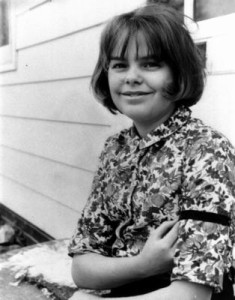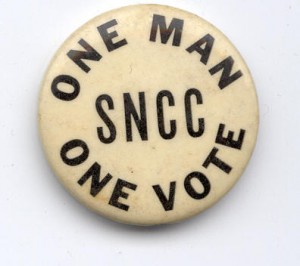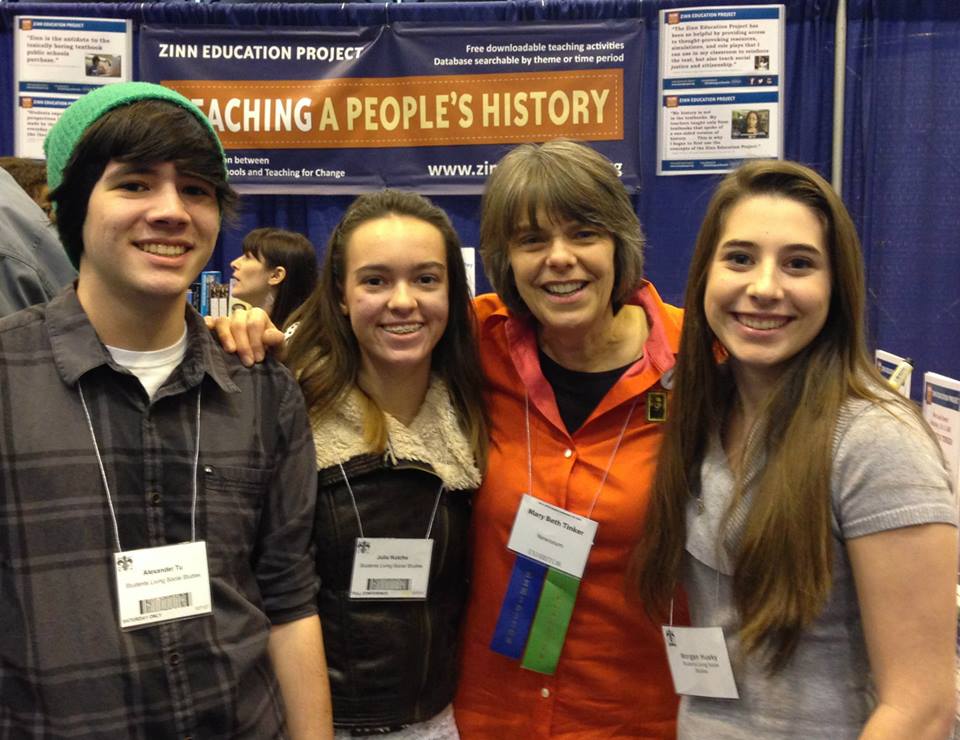
On Dec. 16, 1965, a group of students — including organizer Bruce Clark (17 years old), Christopher Eckhardt (16 years old), John F. Tinker (15 years old), Mary Beth Tinker (13 years old), Hope Tinker (11 years old), Paul Tinker (8 years old) — wore black armbands to school to protest the war in Vietnam. The school board got wind of the protest and passed a preemptive ban. When the students arrived at school on December 16, they were asked to remove the armband. When the students refused, they were sent home.
The students were suspended and told they could not return to school until they agreed to remove their armbands.
Represented by the ACLU, five of the students and their families embarked on a four-year court battle that culminated in the landmark Supreme Court decision Tinker v. Des Moines.
On February 24, 1969, the Court ruled 7-2 that students do not “shed their constitutional rights to freedom of speech or expression at the schoolhouse gate.” The Court ruled that the First Amendment applied to public schools, and school officials could not censor student speech unless it disrupted the educational process. Because wearing a black armband was not disruptive, the Court held that the First Amendment protected the right of students to wear one. [Adapted from ACLU post.]
Mary Beth Tinker frequently talks with young people about the background of the story. She describes her family’s activism, Freedom Summer, and Burnside v. Byars, a Mississippi case that set the precedent for Tinker v. Des Moines.

Mary Beth Tinker
I grew up in Iowa in the 1950s and ’60s. Like now, more and more people were speaking up about the great economic and racial injustice.
One of them was my father, a Methodist minister. He complained to authorities about the local swimming pool’s “whites only” policy, and was removed from his church.
My mother saw that the local drugstore didn’t hire African Americans, so she joined a picket line with her friend, Edna. When she started taking us kids along, it was exciting to stand up against “racial discrimination” by carrying signs and singing freedom songs.
In fact, lots of kids were standing up. In 1963, at age 10, I watched TV as the brave kids of the Birmingham Children’s March faced German shepherds and water hoses.
That summer, my sister went to the March on Washington with prize money she won in an NAACP essay contest on “What the Emancipation Proclamation Means to Me.”
In 1964, the Student Nonviolent Coordinating Committee (SNCC) started Mississippi Freedom Summer. With white terrorism, only 5 percent of African Americans were registered.
It was a huge success, leading to the Voting Rights Act of 1965, among other victories. But as the summer began, three youths were murdered by the Klan, and on August 4, the bodies of James Chaney, Micky Schwerner, and Andrew Goodman were found.
The very same day, August 4, the U.S. Navy claimed that a ship had been attacked in the Gulf of Tonkin. The resulting congressional resolution escalated the Vietnam War.
On August 24, my parents went to Mississippi to volunteer with Freedom Summer. They returned with tales of Fannie Lou Hamer, love, and shootings. I turned 12.
 That fall, Mississippi high school students protested the Freedom Summer killings with buttons saying “One Man, One Vote. SNCC.” They were suspended, and went to court.
That fall, Mississippi high school students protested the Freedom Summer killings with buttons saying “One Man, One Vote. SNCC.” They were suspended, and went to court.
By Christmas of 1965, it was my turn to speak up. Watching burning huts and soldiers in body bags on TV, my brothers and sisters and I joined other students to wear black armbands to mourn the dead. When we were suspended, the ACLU took the case.
As “Tinker” wound through the courts, the Burnside students won at the 5th Circuit Court of Appeals in 1966. Soon after, the 8th Circuit Court of Appeals ruled against us. With opposite rulings in similar cases, the stage was set for a Supreme Court appeal. Burnside was not appealed, but Tinker was, and the Supreme Court agreed to hear it.
The ruling in 1969 in our favor was a victory for all public school students. Citing Burnside, the court said a student “may express his opinions, even on controversial subjects” . . . if he does so without “materially and substantially interfer[ing] with the requirements of appropriate discipline in the operation of the school” and without colliding with the rights of others. (Burnside v. Byars.)

Mary Beth Tinker and students at the National Council for the Social Studies, 2013. Source: Zinn Education Project.
Since Tinker, three Supreme Court rulings have cut back on the speech rights of students: Bethel v. Fraser, Hazelwood v. Kuhlmeier, and Morse v. Fraser. But the basic precedent of Tinker remains — that students do have free speech rights in public schools.
